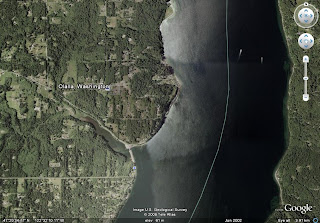
As planned, we drove into the lovely town of San Ignacio for dinner and ate at an outside table right on the square, at a restaurant where we’d stopped for a beer yesterday. The restaurant was adjacent to the church built 300 years ago. As the evening wore on, a large and very well-dressed crowd of Mexicans began congregating on the steps of the church, and we eventually learned the occasion was a Quinceanera, or celebration of a young girl’s turning 15 and being “presented” to family, friends and the community. The honored young girl was dressed in a full-length white dress with colorful ribbons, many layers of fabric and her hair done in a fancy style. She looked beautiful and nervous, but happy. We heard the music playing in the church as the event continued but did not venture inside to watch.


































.JPG)







